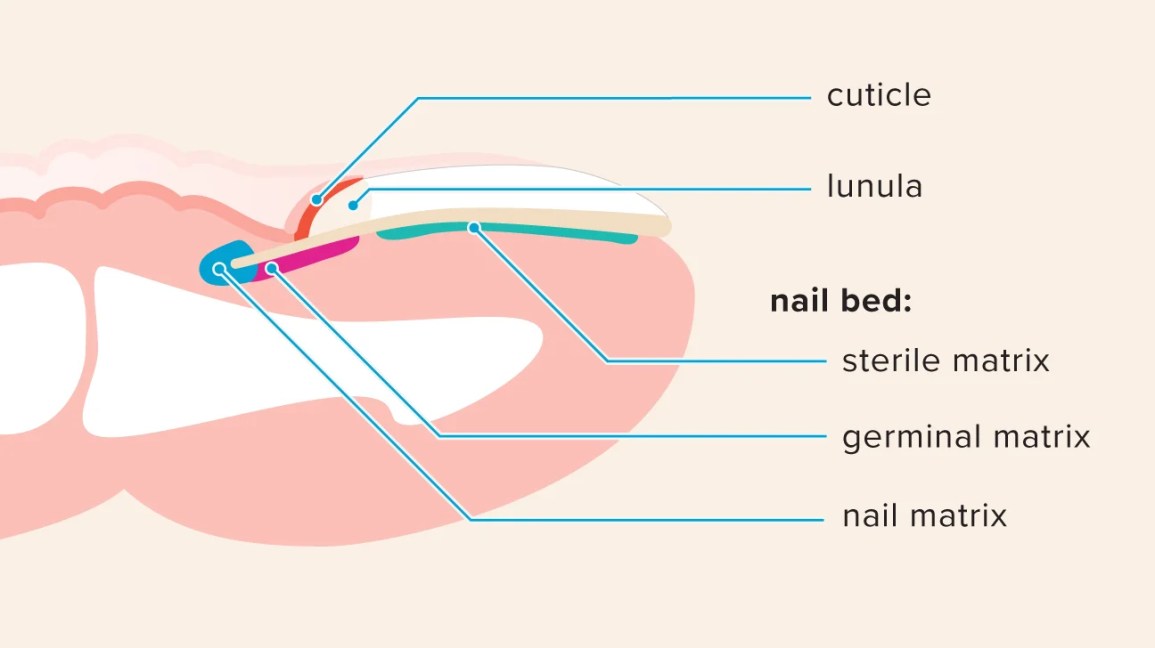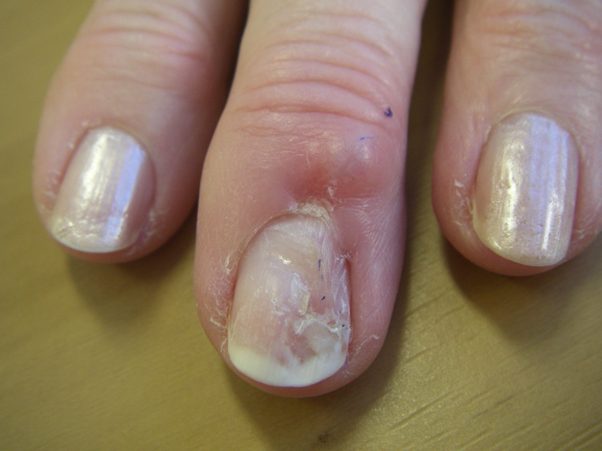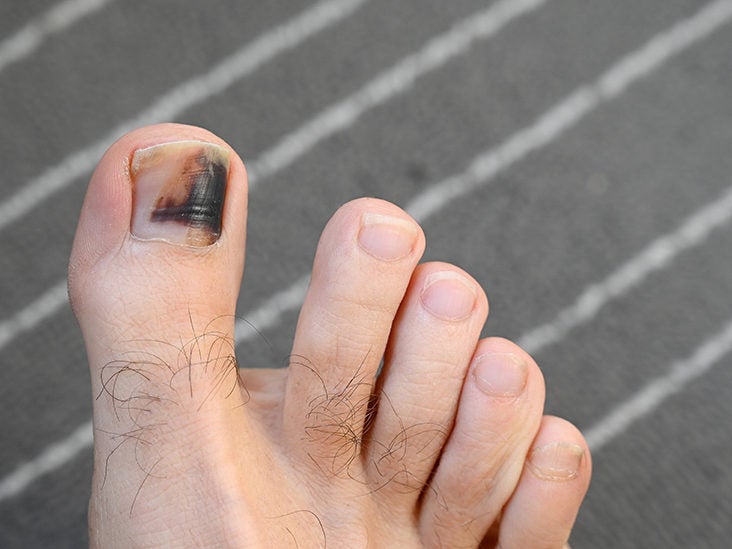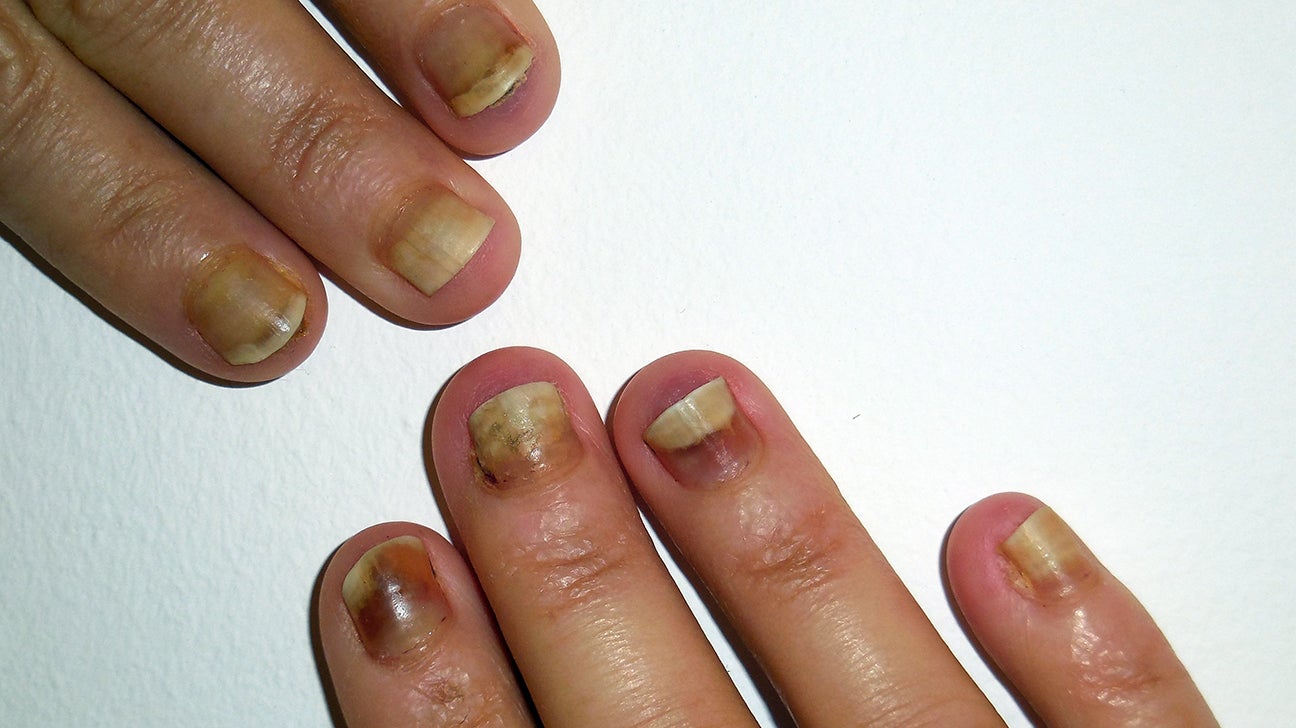Introduction

The nail bed is a crucial part of the nail structure, providing support and nourishment to the nails. When the nail bed is damaged, whether due to injury or certain medical conditions, it raises the question of whether it can grow back. This blog post aims to explore the concept of nail bed regrowth, discussing the factors that affect it and the potential for regeneration. We will also delve into the anatomy of the nail bed, highlight common causes of nail bed injuries, and examine medical interventions that can aid in the regrowth process. Additionally, we will provide tips for maintaining nail health and preventing nail bed damage. If you have ever wondered about the regrowth potential of nail beds, this article will provide valuable insights and information.
Can Nail Beds Grow Back: Understanding Nail Bed Regrowth
Understanding nail bed regrowth is essential to determine the potential for nail beds to grow back. If only the top layer of the nail bed is damaged, it is likely to regrow on its own. However, severe damage or complete loss of the nail bed may require surgery for repair. Artificial nail beds can also be used to aid in the regrowth process. It is important to consult with a healthcare professional to assess the extent of the nail bed damage and explore appropriate treatment options.
Factors Affecting Nail Bed Regrowth
Several factors can affect nail bed regrowth. These include:
- Severity of damage: The extent of the nail bed damage will determine its ability to regrow. Minor injuries may heal on their own, while more severe damage may require medical intervention.
- Age and overall health: Younger individuals and those in good overall health tend to have better regrowth potential. Conditions that affect circulation or immune function can impede nail bed regeneration.
- Proper care and maintenance: Keeping the nail bed clean and protected can promote regrowth. Avoiding further trauma or damage to the nail bed is crucial for optimal healing.
- Nutritional status: A balanced diet rich in vitamins and minerals, particularly those essential for nail health, can support nail bed regrowth.
- Compliance with medical advice: Following medical recommendations for treatment and care after nail bed damage is vital for optimal regrowth.
It is important to consult with a healthcare professional to determine the best course of action for nail bed regrowth based on individual circumstances.
Anatomy Of The Nail Bed

The nail bed is a crucial part of the nail structure, located beneath the nail plate. It is composed of specialized skin cells that provide nourishment and support for the growth and maintenance of the nail. The nail bed has a rich blood supply, which gives the nails their pink coloration. It also contains nerve endings, which contribute to the sensitivity of the fingertips. The nail bed is responsible for producing keratin, the protein that forms the nail plate. Understanding the anatomy of the nail bed is essential for comprehending its regrowth potential and the factors that affect its healing process.
Structure And Function Of The Nail Bed
The nail bed is a specialized area of skin located beneath the nail plate. It is composed of layers of epithelial cells that provide support and nourishment for the nail. The nail bed is rich in blood vessels, which gives the nails their pink color. It also contains nerve endings, making the fingertips sensitive to touch. The nail bed plays a crucial role in nail growth and maintenance by producing keratin, the protein that forms the nail plate. Understanding the structure and function of the nail bed is essential for comprehending its regrowth potential and the factors that affect its healing process.
Nail Growth Process
The nail growth process occurs in specific stages and is a continuous cycle. It starts at the matrix, which is the base of the nail bed, where new cells are produced. As the new cells grow, they push the older cells forward, forming the nail plate. The nail plate is made of keratin, a tough protein that provides strength and protection to the nail. Blood vessels in the nail bed provide nourishment to the growing nail, while the nail bed itself supports the nail plate. The average rate of nail growth is about 1 millimeter per week, although this can vary based on factors such as age, overall health, and genetics. Regular nail care, proper nutrition, and good circulation are important for promoting healthy nail growth.
Nail Bed Injuries And Damage

Nail bed injuries and damage can occur as a result of accidents, trauma, or improper nail care practices. Common causes include crushing injuries, cuts, excessive pressure, and chemical exposure. When the nail bed is damaged, it can lead to pain, bleeding, swelling, and infection. Additionally, severe injury can result in the loss of the nail or even damage to the surrounding tissue. It is important to seek proper medical attention for nail bed injuries to prevent complications and promote optimal healing.
Causes Of Nail Bed Injuries
Nail bed injuries can occur due to various causes. These include accidents such as crushing injuries, cuts, or getting the finger trapped in a door. Excessive pressure on the nail bed, from activities like nail biting or using tools improperly, can also lead to injury. Chemical exposure, such as contact with harsh cleaning agents or nail polish removers, can irritate and damage the nail bed. Additionally, repetitive trauma from activities like playing certain sports or typing for extended periods can contribute to nail bed injuries. It is important to practice proper safety measures and nail care to prevent such injuries.
Effects Of Nail Bed Damage
Nail bed damage can have several effects on the appearance and function of the nails. When the nail bed is damaged, it can result in changes to the color, texture, and shape of the nails. The affected nails may become discolored, thickened, or develop ridges. Additionally, nail bed damage can cause the nails to grow abnormally or become brittle and prone to breakage. In severe cases, nail bed damage can lead to nail loss or deformities. It is important to seek medical attention for nail bed injuries to prevent long-term complications and promote proper nail regrowth.
Regeneration Of Nail Beds

The regeneration of nail beds is possible under certain conditions. The nail bed has the ability to regenerate when there is an intact nail matrix, the tissue responsible for nail growth. Studies have shown that the nail bed regenerates well when the nail matrix is present, but poorly when it is absent. This suggests that the nail bed regrowth occurs from the nail matrix. However, the regenerative capacity of the nail bed may vary depending on the severity of the injury and individual factors. Seek medical attention for proper evaluation and guidance on promoting nail bed regeneration.
Nail Bed Regrowth Potential
The potential for nail bed regrowth depends on several factors. The presence of an intact nail matrix, which is responsible for nail growth, is crucial for successful regeneration of the nail bed. Studies have shown that the nail bed has the ability to regenerate well when the nail matrix is present. However, in cases where the nail matrix is absent or damaged, nail bed regrowth may be limited or poor. It is important to seek medical attention for proper evaluation and guidance on promoting nail bed regeneration.
Ways To Promote Nail Bed Regeneration
Ways to promote nail bed regeneration include:
- Keeping the area clean: Proper hygiene helps prevent infection and creates an optimal environment for regrowth.
- Protecting the injured nail bed: Use a protective covering or splint to shield the damaged area from further trauma.
- Applying topical treatments: Certain creams or ointments, containing ingredients like vitamin E or aloe vera, can nourish the nail bed and support healing.
- Maintaining a balanced diet: Eating a nutritious diet rich in vitamins and minerals can promote nail health and aid in regeneration.
- Avoiding harmful habits: Refrain from biting your nails or using harsh chemicals, as these can hinder the regrowth process.
- Seeking professional guidance: Consult a healthcare professional for appropriate treatment options and advice tailored to your specific condition and needs.
Medical Interventions

Medical interventions for nail bed regrowth may be necessary in cases of severe or complex injuries. Surgical procedures such as nail bed repair or reconstruction may be performed to promote proper healing and regrowth. This involves removing damaged tissue, aligning the nail bed, and suturing the wound. In some cases, transplantation and grafting techniques may be used to replace damaged or missing nail tissue. These interventions should be performed by qualified healthcare professionals to ensure the best outcomes. It is important to consult with a healthcare professional for appropriate treatment options and guidance tailored to your specific condition and needs.
Surgical Procedures For Nail Bed Regrowth
Surgical procedures for nail bed regrowth may be necessary in cases of severe or complex injuries. These procedures involve repairing or reconstructing the nail bed to promote proper healing and regrowth. The damaged tissue is removed, and the nail bed is aligned and sutured. In some cases, transplantation and grafting techniques may be used to replace damaged or missing nail tissue. It is important to consult with a qualified healthcare professional for appropriate treatment options and guidance tailored to the individual’s specific condition and needs.
Transplantation And Grafting Techniques
Transplantation and grafting techniques are surgical procedures used to replace damaged or missing nail tissue. In cases where the nail bed is severely injured or cannot regrow on its own, these techniques can promote nail bed regrowth. Transplantation involves taking healthy tissue from another part of the body and surgically attaching it to the damaged nail bed. Grafting, on the other hand, involves taking tissue from a donor source, such as a cadaver, and grafting it onto the nail bed. These techniques help stimulate the regeneration of the nail bed and promote the growth of healthy nails. It is important to consult with a healthcare professional for appropriate evaluation and guidance when considering transplantation or grafting for nail bed regrowth. Additionally, it is essential to follow post-operative care instructions and attend regular follow-up appointments for optimal results.
Conclusion

In conclusion, the ability of nail beds to grow back depends on the extent of the damage. If only the top layer of the nail bed is affected, it is likely to regenerate on its own. However, in cases of severe damage or complete loss of the nail bed, surgical interventions such as transplantation or grafting may be necessary to promote regrowth. It is important to consult with a healthcare professional for appropriate evaluation and guidance. Taking proper care of nails and preventing injuries can help maintain overall nail health.
Tips For Maintaining Nail Health And Preventing Nail Bed Damage
To maintain nail health and prevent nail bed damage, individuals can follow these tips:
- Keep nails properly trimmed and shaped to prevent them from catching on objects and causing injury to the nail bed.
- Avoid biting or picking at the nails, as this can damage the nail bed and lead to infection.
- Moisturize the nails and cuticles regularly to keep them hydrated and prevent dryness and cracking.
- Use protective gloves when performing activities that may expose the nails to chemicals or excessive moisture.
- Avoid using harsh nail products, such as acetone-based nail polish removers, which can weaken the nails and damage the nail bed.
- Maintain a nutritious diet rich in vitamins and minerals to promote overall nail health.
By following these tips, individuals can help maintain the health of their nails and minimize the risk of nail bed damage.
Summary Of Nail Bed Regrowth Possibilities And Limitations
Nail bed regrowth is possible depending on the extent of the damage. If only the top layer of the nail bed is affected, it can regenerate on its own. However, complete loss of the nail bed may require surgical intervention or the use of artificial nail beds. The regrowth process can take several months, and the success rate varies for each individual. It is important to maintain nail health and prevent further damage to promote proper regrowth. Following proper nail care practices and seeking medical advice can help maximize nail bed regrowth potential.
Frequently Asked Questions about Nail Clippers on Planes
Q: Can I bring nail clippers on a plane?
A: Yes, you are generally allowed to bring nail clippers on a plane in your carry-on bag or personal items. However, there are a few guidelines to keep in mind.
Q: Are all types of nail clippers allowed?
A: Yes, most types of nail clippers are allowed on planes. This includes basic nail clippers, nail scissors, and nail files. However, clippers with sharp, pointed blades may be scrutinized more closely by security personnel.
Q: Do I need to pack my nail clippers in a specific way?
A: Nail clippers are typically small and can be packed easily in your carry-on bag or personal items. It’s recommended to place them in a clear plastic bag along with other small metal objects, such as keys or coins, to facilitate the screening process.
Q: Can I take nail clippers in my checked baggage?
A: Yes, you can pack nail clippers in your checked baggage without any issues. Since there are no strict restrictions on putting nail clippers in checked luggage, you don’t need to worry about it.
Q: Are there any restrictions on nail clippers in specific countries or airlines?
A: While nail clippers are generally allowed on planes worldwide, it is important to note that some countries or airlines may impose their own restrictions or guidelines. It’s recommended to check the specific regulations of your destination country or airline before traveling.
Q: Can I use nail clippers during the flight?
A: For the safety and comfort of everyone on board, it’s advisable to avoid using nail clippers during the flight, especially if it could cause a disturbance or pose a risk to your fellow passengers.
Q: Are there any alternatives to nail clippers for trimming nails during a flight?
A: Yes, if you need to trim your nails during a flight, you may consider using a nail file instead of clippers. Nail files are generally allowed on planes and can be a convenient and safer option.
Remember, while these FAQs provide general information, it’s always best to check with your specific airline or airport authority for any updates or changes to the regulations regarding nail clippers on planes.

I am proud to offer non-toxic beauty options. The gel polishes I offer are “9-Free”, free of nine of the most commonly found allergens and toxic chemicals in nail polish, and cruelty-free, vegan, and HEMA-free. The nail lacquers I offer range between “7-Free” and “16+-Free” and are also cruelty-free and vegan.